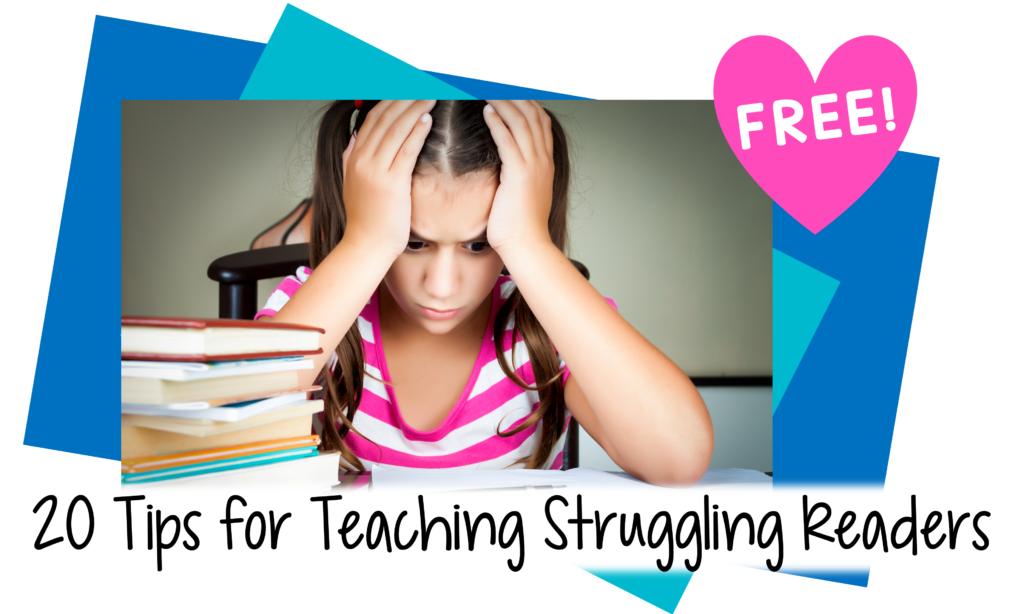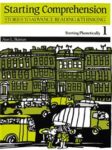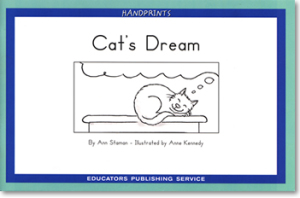
Meet Liza.
Liza was “reading” a book. The text said:
I see a puppy.
Liza read:
“Look at the little dog.”
She could match the meaning of the text to the illustrations because she heard the language pattern during the book introduction, but she was not yet ready to match her voice to the text, or to monitor her attempts phonetically. Thus, she made semantic errors (errors that match meaning). Liza was a Pre-Alphabetic reader.
Young children go through different stages as they learn to read. When we figure out the stage a student is on, we can adjust how and what we teach them to help them move efficiently through that stage and on to the next one. That way we don’t waste precious teaching time pushing children to do something they aren’t ready for.
READING STAGES
Linnea Ehri has spent her career studying the overlapping phases that young readers go through. The names she uses for these stages reflect the predominant connections the children are making at the time:
- Pre-Alphabetic: Children know few if any letter-sound correspondences and are not ready to analyze words phonetically. They rely on learning words as wholes and guessing from context. (PreK-K)
- Partial-Alphabetic: Readers know some letter-sound correspondences, but can’t decode whole words. They might use partial phonetic cues—often 1st or last letters—along with the context—to figure out words. (K-1)
- Full-Alphabetic: Youngsters use a full decoding strategy to identify unfamiliar word—either phoneme by phoneme or by analogy. (1-2)
- Consolidated-Alphabetic: Students are more skilled at decoding and can recognize larger chunks—morphemes or syllables. (2-3+)
I find Ehri’s work fascinating. Her research conclusions have guided my teaching content and methods for a long time, because the stages she describes have matched the progression of many of my reading students, including Liza.
USE READING STAGES TO HELP READERS MAXIMIZE THEIR LEARNING
No matter what phase a child is moving through, there are three general ways we can adjust our teaching to the stage:
- Introduce words most easily learned at that phase.
- Teach strategies for learning at that stage.
- Nudge the students toward the next phase.
THE PRE-ALPHABETIC STAGE
Today I want to focus on the first stage of reading—the Pre-Alphabetic stage. During this brief phase, children are unable to decode words at all. Although they might know a few letters, they don’t yet know any sounds that correspond with the letters, so for them, words are like pictograms. Even if they did know sounds, these kids have not developed enough to be able to analyze words, and decoding involves phonetic analysis. Pre-alphabetic reading is simply a matching process—matching whole words with their meaning and pronunciation. These children might recognize the McDonald’s sign without knowing any of the sounds in the word, including /m/.
If Pre-Alphabetic readers do remember words, it is usually on the basis of isolated visual cues. Perhaps they were told that there are two eyes in the middle of the word look. Their writing attempts are mostly scribbles and random letters. They may be able to write their own name, but don’t know the sounds of the letters in their name. These youngsters are usually in Pre-K to early kindergarten.
HELP PRE-ALPHABETIC READERS MAXIMIZE THEIR LEARNING
1. Introduce words most easily learned at the Pre-Alphabetic stage.
Begin with words that are easily learned as wholes. With paired-associate learning, it doesn’t matter whether the words are phonetically regular or not, because these readers are not decoding words yet. But researchers have discovered other factors that make words easier to remember early on:
- imageability
- emotional connections
- unusual spellings
- word length
- frequency in texts
Imageability
Imageable words are words that appeal to the senses, primarily through mental images. Words lie on a continuum between imageable and abstract. It’s generally easier to remember imageable words than abstract ones. A child in the Pre-Alphabetic phase might be able to remember fox before of, for example. Of all the parts of speech, nouns are the most imageable, with verbs next, and then adjectives. More imageable nouns and verbs are learned before less imageable ones, and so forth.
Emotional connections
Words with emotional connections also help children learn words during the Pre-Alphabetic stage. Mom and Dad fall into this category, as do cat and dog, if there is a pet in the family. Often kids at this stage can write their siblings’ or pets’ names before they can identify all the letters in those names. An added benefit of words with emotional connections is that young children are motivated to write these words.
Unusual spellings
Words with unusual spellings tend to get learned early on because they are unique. A child might remember pizza, because of the double Zs, before they learn a shorter word with no unusual characteristics. Mneumonic tricks also fall into this category (e.g., You look with your eyes, and look has two eyes in the middle).
Word length
Some researchers have found that short words tend to be remembered earlier than longer words. However, I have observed that two-letter words such as on and no can be easily confused. Also, many of the shorter words are abstract, and so less memorable when children can’t use phonetic cues to help identify the words (e.g., if, it, as, at). Many kids have an easier time learning short words once they know some letter sounds.
Frequency/repetition
High frequency words, words that appear often in print, are easily remembered because repetition helps us all with rote learning. Introduce words that students will see many times in their texts, or choose books according to the high frequency words in the texts. Then have the students read the books over and over. It’s best when the sight words you are teaching show up in different books, different contexts.
While each of these factors can influence the ease with which a word is remembered, obviously words that embody more than one factor are the most likely to be retained.
2. Teach strategies for learning at the Pre-Alphabetic stage.
Another way we can help whole-word readers is by adjusting the strategies we teach them. In this very early phase, we are initially teaching them how to amass a sight vocabulary. Here are some activities for helping children learn words at the Pre-Alphabetic stage.
- Demonstrate word by word pointing (voice-print matching) in shared reading.
- Teach concepts of print.
- Increase word sense by having students clap syllables.
- Have students use tiles and magnetic letters to create words, with a model.
- Have children trace words in air or in sand trays.
- Have them practice writing the words on whiteboard.
- Students write messages that contain the word.
- Children recreate cut-up sentences of the written messages.
- Present the word wall as a cue for writing.
- Have the kids read words on flash cards (only useful in conjunction with reading the same words in texts).
- Read and reread books with consistent language patterns and lots of high frequency words.
- Show students how to use the context to check whether a word makes sense.
- Ask the children to locate a word in text; practice in isolation; then locate the word in the text again.
Yes, read lots and lots of books–to, with, and by. Books at this level should be highly predictable, with a consistent language pattern, since the main purpose of reading at this point is to gain a basic sight vocabulary. Be sure to look for books that repeat a basic set of sight words in different contexts.
3. Nudge the students toward the Partial-Alphabetic stage.
While it’s important to be conscious of the stage our students are on, part of our job as reading teachers is to help them progress to the next developmental stage. I hope you agree that nudging the students toward the next phase is lots of fun! Once you feel your students are ready, you can introduce different words and activities to help them move on.
Most children are in the Pre-Alphabetic stage for a very brief period of time, although those with pronounced reading styles may stay longer. As students begin to learn letter sounds, they merge into the Partial-Alphabetic phase. As you recall, in the Partial-Alphabetic stage, readers begin to use partial phonetic cues along with context to guess words. They know some letter sounds, but are not yet able to fully decode a word.
Liza stayed in the Pre-Alphabetic stage for a long time, but eventually she became a Partial-Alphabetic reader.
Here is a page in one of Liza’s books at that point:
She went into the house.
She read:
“He walks in the home.”
Liza was finally finger pointing and matching her voice to the number of words on the page. She was also able to use first letter cues some of the time. But she could still not decode the whole word, either sequentially or through analogies.
Because children move so quickly into the Partial-Alphabetic stage, I encourage my students to use letter sounds from the get-go. Of course, the speed with which they do this varies from student to student. For this reason, I include phonetically regular words on my initial word lists, as long as the words also fit into one of the above-mentioned categories (imageability, emotional connections, unusual spellings, short word length, and frequency/repetition in texts). I also encourage–not demand–use of phonetic cues.
Here are a few of the activities I use to nudge my students to the Partial-Alphabetic phase as soon as possible.
- Practice phoneme isolation of first and last letter in words.
- Include phonetic words on early word lists.
- Introduce letter shapes, names, sounds.
- Sort magnetic letters according to letter characteristics (size, shape, case).
- Associate letters with key words.
- Read alphabet books with key word images.
- Add key word images to word wall.
- Group words that begin the same on word wall.
- Read and reread different books that contain high frequency words.
- Use the context to check whether a word makes sense.
- Locate the words in text; practice in isolation; locate words in text again.
In the Partial-Alphabetic stage, the kids should no longer be reading highly patterned books. Instead, introduce books that encourage the readers to self-monitor with the first letter of a word, while not requiring them to decode the word completely.
You may wonder what happened with my student Liza. She was one of my Special Ed students. She never progressed to the Full-Alphabetic or Consolidated-Alphabetic stage when I knew her. For whatever reason, she continued to rely primarily on learning words as wholes and guessing words on the basis of isolated phonetic cues and the context, in spite of our efforts to teach her to analyze words phonetically.
But most children progress smoothly from the Pre- to Partial-Alphabetic stage. So, to all you pre-school, kindergarten, 1st grade, or homeschool teachers out there, think about the young readers you are working with, and consider what stage they are working on. Adjust the words, books, and activities you offer accordingly, and always try to move the kids ahead to the next developmental stage in learning to read. Have fun with reading stages!
Years ago, I created a whole series of workbooks for kids who are stuck at the Pre-Alphabetic or Partial-Alphabetic stage.
Here is a free editable list of the very first sight words I try to teach my students.
The Noun Town activities are wonderful for introducing concrete parts of speech to very young children.
I created my Handprints series of 120 leveled readers for children in preschool, kindergarten, 1st, and 2nd grades. The early books include a strong proportion of high frequency words. Cat’s Dream is one of my favorites.
References
Coltheart, Veronika, Veronica J. Laxon, and Correine Keating. 1988. Effects of word imageability and age of acquisition on children’s reading. British Journal of Psychology 79 (1): 1-12. https://doi.org/10.1111/j.2044-8295.1988.tb02270.x.
Ehri, Linnea C. 2014. Orthographic mapping in the acquisition of sight word reading, spelling memory, and vocabulary learning. Scientific Studies of Reading 18: 5-21. https://doi.org/10.1080/10888438.2013.819356.
Ehri, Linnea C. 2005. Development of sight word reading: Phases and findings. In The Science of Reading: A Handbook (Margaret J. Snowling, Charles Hulme, eds.). https://doi.org/10.1002/9780470757642.ch8
Ehri, Linnea C. and Sandra McCormick. 1998. Phases of word learning: implications for instruction with delayed and disabled readers. Reading & Writing Quarterly: Overcoming Learning Difficulties 14(2): 135-163.
Jorm, A. F. 1977. Effect of word imagery on reading performance as a function of reader ability. Journal of Educational Psychology, 69(1), 46-54. http://dx.doi.org/10.1037/0022-0663.69.1.46.
Klose, Anne E., Steven Schwartz, and Judith M. Brown. 1983. The imageability effect in good and poor readers. Bulletin of the Psychonomic Society 21(6): 446-448. https://doi.org/10.3758/BF03330004.
McDonough, Colleen, Lulu Song, Kathy Hirsh-Pasek, Roberta Michnick Golinkoff, and Robert Lannon. 2011. An Image is worth a thousand words: Why nouns tend to dominate verbs in early word learning. Developmental Science 14(2): 181-189. https:// doi: 10.1111/j.1467-7687.2010.00968.x.
Steacy, Laura M. and Donald L. Compton. 2019. Examining the role of imageability and regularity in word reading accuracy and learning efficiency among first and second graders at risk for reading disabilities. Journal of Experimental Psychology 178: 226-250. https://doi.org/10.1016/j.jecp.2018.09.007






Leave a Reply